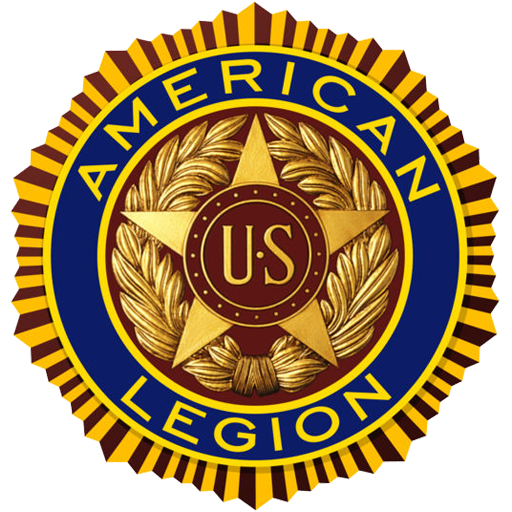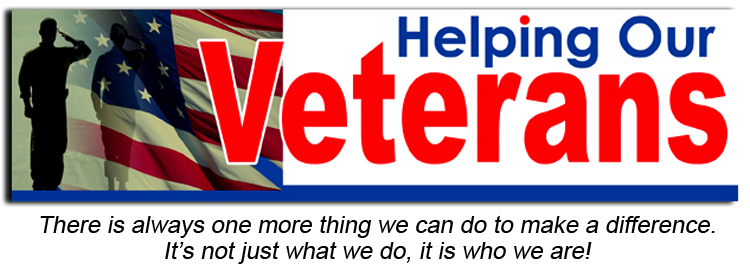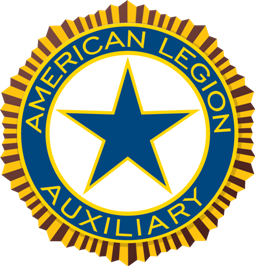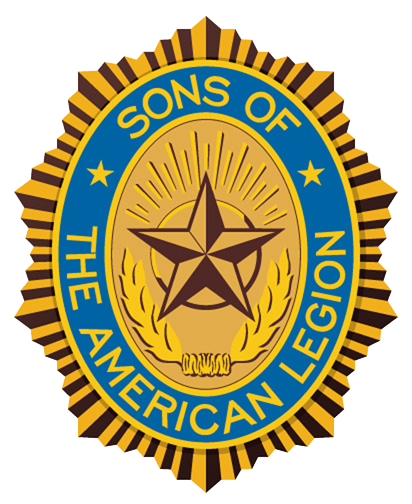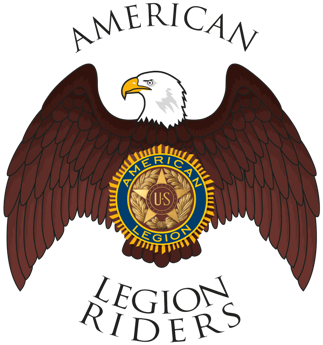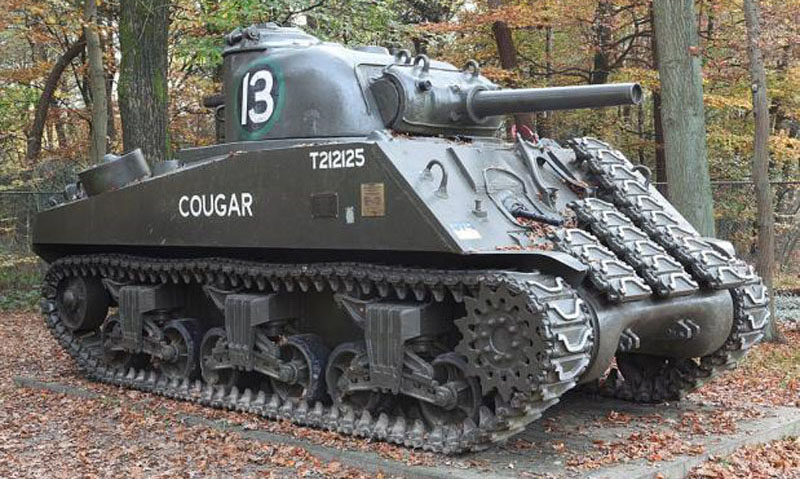
The article below was written by 7th grader Aiden Wilkins of Kingston Schools in Michigan. It is spectacularly done, and incredibly informative. We’re assuming he received an A for his informative article detailing the history of transportation during WWII. The article contains links to numerous other sites where additional information is available. This article is reprinted from the American Legion’s Burn Pit website.
The Cars, Tanks and Airplanes of World War II
World War II, a global conflict that lasted from 1939-45, was among the most far-reaching conflicts in history. The war spanned six continents, involved more than 30 countries, and introduced new weapons and machinery. Nations pushed their best scientific minds to their limits designing and manufacturing equipment for troop and supply transport. The United States alone raised hundreds of millions of dollars through bond campaigns to fund the war effort. Unlike in previous wars, when horsepower was the main means of transport, military vehicles became a key part of the fight to capture territory, supplies, and enemy soldiers. Whether in the air or on the ground, the cars, tanks, and airplanes used during World War II had a great impact on a nation’s ability to successfully campaign against the enemy. As Joseph Stalin said, “The war was decided by engines and octane.”
World War II Cars
If you’ve ever gotten a car title loan quote for a Jeep, you’ve gotten one for a piece of military history. Though the jeep has been in the civilian world for more than 70 years, it was initially designed as a military transport. At the beginning of World War II, many countries still used horses and wagons to move troops and supplies, including Germany. The United Kingdom was the only nation that entered the war with a full complement of military vehicles, including the Guy armoured car and the Bison concrete armored lorry. The United States soon followed Britain’s lead when it came to the use of military vehicles and stopped using horses before entering the war. In 1940, the U.S. Army solicited bids for automakers to design a light reconnaissance vehicle that would later become the jeep. These vehicles moved soldiers and supplies over some of the most difficult terrain in Europe and Asia and demonstrated the superiority of modern vehicles over traditional transports in warfare. Both the Axis and Allied powers used jeeps, whether built or captured, for troop and supply transport.
- Jeep: The Story of the Legend: The jeep is one of the most iconic vehicles from World War II. Learn more about how it came to be and how it helped the Allies win the war.
- How Detroit Won the War: American ingenuity and manufacturing were integral to the Allies. Discover how Motor City shaped the course of the war.
- 20 World War II Jeep Facts You Should Know: Learn more about the history of the jeep with this short list of interesting facts.
- World War II Vehicles: Take a closer look at some of the cars used by the Allies at the Lyon Air Museum.
World War II Trucks
Along with the jeep, trucks played a vital role in troop transport, maintaining supply lines and serving as fire engines. Most of the trucks were supplied by GMC, which built more than 500,000 2½-ton 6×6 trucks from 1940 to 1945. This truck, dubbed the “deuce-and-a-half” by soldiers, was sturdy like a Jeep, but its larger size allowed it to transport more troops and supplies. The deuce-and-a-half also carried tons of gasoline to the front lines, enabling Allied forces to continue to advance without fear of running out of fuel. Germany, still dependent on horsepower at the beginning of the conflict, was unprepared for the speed with which the Allied forces could move troops and supplies. Though they attempted to quickly assemble mechanized transports, they often ran out of gas, which left German troops open to Allied attacks.
- GMC Trucks in World War II: Discover the story behind the more than 500,000 military trucks built by GMC to support the Allies in every theater of the war.
- The American Auto Industry in World War II: GMC wasn’t the only supplier of trucks during the war. Learn more about how Chevrolet aided the war effort on this page.
- Fire Trucks of World War II: Fire trucks are key to troop safety and supply security. Learn more about the trucks that kept troops safe during World War II.
- Fire Trucks at War: Learn more about the vehicles and men that made up the U.S. Army engineer fighting platoons of World War II.
World War II Tanks
Tanks first appeared during World War I and quickly proved their worth in battle. A modern take on ancient siege engines, tanks protected troops and served as mobile artillery units, while their all-terrain mobility made them ideal for going over ground impassable to trucks or jeeps. That every country that fought in World War II had tank regiments speaks to their effectiveness. Smaller, lightweight tanks scouted locations for troop movement in enemy territory, while heavier models transported key military personnel in safety. The United States, Britain, the Soviet Union, and Germany had the most advanced tanks during the war. The American M-4, known as the Sherman, with its moveable turret and 75 mm cannon, was lightly armored and maneuverable and saw action in every theater of World War II. Other notable tanks from this era include Germany’s Tiger II and Panzer tanks, Britain’s Churchill Crocodiles, and the Soviet T-34.
- Armored Fighting Vehicles: Read about the armored fighting vehicles that saw combat in World War II here.
- World War II Tanks and Fighting Vehicles: The Complete Guide (PDF): This comprehensive guide to tanks and military vehicles is a must-read for those looking to learn more about military vehicles that saw service in World War II.
- The Most Lethal Tanks of World War II: Learn about the tanks that shaped World War II and influenced tank design for decades to come.
- The M-4 Sherman Tank Was Hell on Wheels and a Death Trap: Reporter and military historian Paul Huard examines the strengths and weaknesses of the Sherman tank and why it was such an integral part of the Allied victory.
- German Tank Maintenance in World War II (PDF): Learn more about Wehrmacht tank maintenance and how it differed from that of the Allies with this report created by the Army in 1954.
- The Rise of the Tank Before World War II: Popular Science looks back at tank development in the years between World War I and World War II.
World War II Aircraft
Aerial warfare existed well before World War II. Hot air balloons were used for propaganda distribution and reconnaissance as early as the Napoleonic Wars, and planes performed aerial bombardments during the Italo-Turkish War of 1911-12. In the years leading up to World War II, advancements in aircraft brought aerial warfare to new heights and illustrated the importance of maintaining air superiority. The Messerschmitts used by the Luftwaffe, the German Army’s aerial warfare branch, were integral to its early victories during the Polish Campaign, the invasion of Norway, and the Battle of France. Allied military aircraft like the British Spitfire and Hurricane gained near-mythic status after seeing action at Dunkirk and during the Battle of Britain and helped turn the tide of the war. Japan’s B5Ns, Zeros, and D3As were used at Pearl Harbor in 1941 in the attack that officially pulled the United States into the global conflict. American planes like the P-51 Mustang and P-38 Lightning were instrumental as fighters as well as long-distance escort planes. The P-38 Lightning was so feared by the Luftwaffe that it earned the nickname “Fork-Tailed Devil.”
- 47 Ships Sunk by Kamikaze Aircraft: Kamikaze pilots were some of the most feared in the Pacific theater. Read about the damage done by Japanese pilots and examine pictures of the destruction left in their wake.
- German Jets: Did you know that Germany was the first nation to have jet-propelled aircraft? Read how Germany went from prototype to jet fighters here.
- The Enola Gay at the Smithsonian Air and Space Museum: Learn more about the aircraft that dropped an atomic bomb on Hiroshima.
- The Deadliest Planes of World War II: What separates the best from the rest? Discover the ten deadliest planes that flew in the theaters of World War II.
- A History of World War II in 25 Airplanes: Air and Space Magazine breaks down the 25 most influential American airplanes of World War II, from training craft to bombers.
World War II History Resources
- The Rise of Adolf Hitler: Find out how Hitler rose from being a failed artist and unremarkable soldier to one of the most powerful leaders in world history.
- London During the Blitz: A Landscape of Fear and Shadows: The Blitz lasted for 18 months and killed more than 43,000 civilians. Learn more about how the Blitz affected everyday life in Britain from its portrayals in contemporary literature.
- World War II Vehicle Database: Learn more about the vehicles and artillery used by both the Allied and Axis powers on this comprehensive website.
- World War II Armor and Artillery: Covering the Ground War of the Second World War: Trucks, armored cars, and tanks all played integral roles in moving troops and supplies during the war.
- Wehrmacht Trucks and Cars: Explore the vehicles of the German army in this large library of primary-source photos.
- German Propaganda Archive at Calvin University: Dig deeper into the German mindset during World War II with propaganda ads from popular German magazines.
- The Ford Motor Company and the Third Reich: Did Ford cooperate with the Nazis during World War II? Discover how Ford operated under the Third Reich in this thought-provoking article.
- World War II: The Holocaust: The Atlantic sheds light on the Holocaust with contemporary images of German Jews in this retrospective on World War II.
- U.S. and German Field Artillery in World War II: A Comparison: Explore the similarities and differences in the field artillery of the United States and Germany here.
- World War II Fast Facts: Get short, simple facts about the troops and ideologies of the major players in World War II.
- World War II in Europe: Follow the steps that led to World War II in the European theater and laid the groundwork for the Holocaust.
- The War at Home: Communication, News, and Censorship: PBS takes a thoughtful look at how World War II shaped communications in America, with an emphasis on the effect newsreels had on morale and the effects of censorship on those reporting from the front lines.
- The 20 Most Important Battles of World War II: Popular Mechanics lays out the 20 battles that were turning points in World War II.
- Inside America’s World War II Propaganda Machine: During the war, the federal government used posters, radio messages, and films to encourage citizens and soldiers to be careful with their resources, whether that meant conserving energy or materials or ensuring that information wasn’t inadvertently passed into enemy hands. Propaganda was also used in an effort to demoralize the enemy.
- The National World War II Museum: Explore the history of World War II at the National World War II Museum.
- The True Glory: Watch a film commissioned by the U.S. and British governments that uses actual combat footage to document events at the end of World War II, from the invasion at Normandy to the German surrender. This film won the Academy Award for Best Documentary Feature in 1945.
- No New Cars Didn’t Stop Automakers, Dealers: During the war, car companies switched over to making military vehicles, and dealers adapted to survive without being able to sell cars.
- The Eleanor Roosevelt Papers: World War II: The Eleanor Roosevelt Papers Project at George Washington University has one goal: to help the world remember the words of the iconic first lady. Discover the role Eleanor Roosevelt played in shaping civil rights and policy during the war years here.
- World War II Vehicles: Discover the vehicles used by the home guard at the RAAF Amberley Aviation Heritage Centre.
- Detroit’s Production Battle to Win World War II: Motor Trend magazine takes a look back at how Detroit aided the war effort.
- The Five Most Bizarre Weapons of World War II: Suicide bomber dogs, big guns, and rocket-propelled shells were among some of the strangest weapons devised during World War II.

